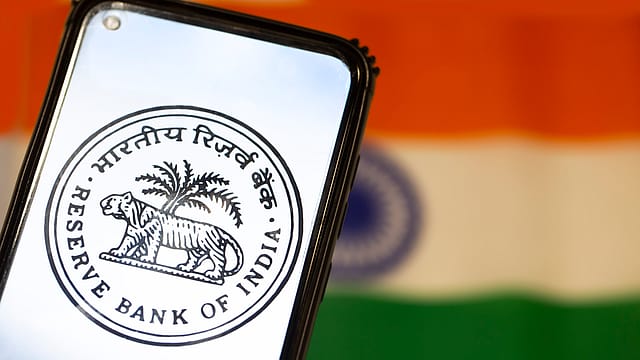RBI orders banks to maintain 10% incremental CRR
ADVERTISEMENT

The Reserve Bank of India has asked banks to set aside extra cash as it looks to absorb excess liquidity of over ₹1 lakh crore from the banking system.
There is surplus liquidity due to the withdrawal of ₹2,000 banknotes, 87% of which have come back into the system as bank deposits, RBI governor Shaktikanta Das says in a press conference after the monetary policy meeting.
"As we have seen in the past, as we may see in the coming months. There could be pressure on liquidity in situations when liquidity held in the system goes into government coffers at the time of tax payments. This happens when advance tax payments are made with regard to direct taxes or the 20th of every month when GST inflows also happen," Das says, adding that there are temporary pressures which last for about three to four days or maybe five days.
However, after a few days, it returns to the system because government expenditure ensures that the money comes back into the system, Das adds.
Excessive liquidity can pose risks to price stability and also to financial stability, according to the RBI governor.
The RBI decided that with effect from the fortnight beginning August 12, 2023, scheduled banks shall maintain an incremental cash reserve ratio (I-CRR) of 10% on the increase in their net demand and time liabilities between May 19, 2023 and July 28, 2023.
December 2025
The annual Fortune 500 India list, the definitive compendium of corporate performance, is out. This year, the cumulative revenue of the Fortune 500 India companies has breached $2 trillion for the first time. Plus, find out which are the Best B-schools in India.
"This is purely a temporary measure for managing the liquidity overhang. Even after this temporary impounding, there will be adequate liquidity in the system to meet the credit needs of the economy," the RBI governor says.
"Efficient liquidity management requires continuous assessment of the level of surplus liquidity so that additional measures are taken as and when necessary to impound the element of excess liquidity," Das adds.
This temporary measure will be reviewed on September 8 or earlier with a view to returning the impounded funds to the banking system ahead of the festival season. "We are sensitive to the cash requirements ahead of the festive season which will kick in from late September," says Das.
The existing cash reserve ratio (CRR) - the share of a bank's total deposit that is mandated by the RBI to be maintained as reserves in the form of liquid cash - remains unchanged at 4.5%.
In his statement, Das said that a substantial increase in headline inflation would occur in the near term led by a spike in prices of tomatoes, cereals and pulses. "The recent spike in CPI inflation is expected to be short-lived, going by past trends. We need to remain watchful and not resort to any knee-jerk reactions. If this spike in inflation, food inflation in particular, shows signs of getting generalised, then we have to act. We have to go beyond maintaining Arjuna's eye to deploying actual policy instruments," the RBI governor says.
These policy instruments are not just rate and stance, there are other ways of dealing with it, says Das. "We have done our bit with regard to incremental CRR today. Incremental CRR is a temporary measure for managing the liquidity overhang," he says.
"We consider it desirable in the interest of price stability and financial stability. It will have an impact on the inflation situation also," Das adds.
